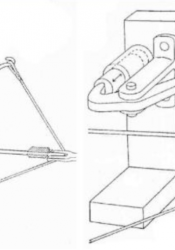Rhodes
This island of Greece is where Dionysius was responsible for creating the complex and futuristic Repeating Catapult. Much like a machine gun, the Repeating Catapult was to fire an entire magazine of two-meter long arrows and decimate enemy forces. The weapon was never fully developed due to cost and logistical inefficiencies.
Parent Map
Coordinates
Latitude: 36.243255300000
Longitude: 27.971760600000
Longitude: 27.971760600000

